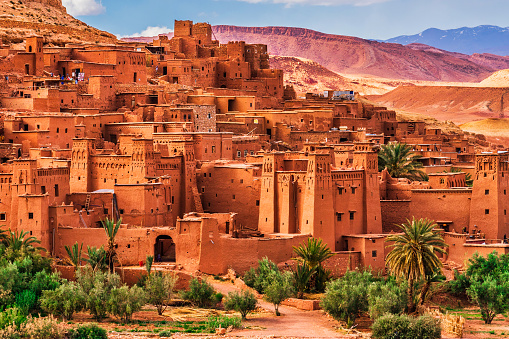Africa has changed drastically from ancient times to the present day. The history of African Cities is almost too immense to grasp, from hieroglyphics and rock art to interesting rituals and indigenous tribes.
While many of them have turned into a modern age under the influence of wars, invasions, commerce, and religion, ancient African cities still hold magnificent architecture, artefacts, and a glimpse into bygone ages. The list goes on, as does the richness of each city’s architecture, sculpture, and rituals.
Let’s discover and dive into some of the amazing cites
Accra
Accra, Ghana’s capital, was established in the late sixteenth century with the establishment of a small village, Ga, on the eastern shore of the Korle Lagoon. Between 1650 and 1680, three forts were constructed to defend the trading posts founded by Europeans (Fort James by the English, Fort Crevecoeur by the Dutch, and Christiansborg Castle by the Danes).
This attracted an increasing indigenous population. The history of Jamestown Area, an urban centre situated near the port of Accra, where large numbers of fishermen still live, Osu (Christiansborg), and Dutch Accra can all be traced back to these three military establishments (which will become Ussher Town).
Dakar
Since Senegal’s independence in 1960. Dakar ( Dacar or Dahar, which means “tamarind tree” in Wolof) has served as the country’s political and economic capital. It was established in 1857 by French settlers under the command of General Louis Faidherbeon. In the site of a Lébou and Wolof fishing village. Dakar rapidly established itself as a major port of call for European ships sailing to South America, as well as airmail planes.
Gao
Gao (formerly Kawkaw ) is a town in Mali, West African Cities, situated on the Niger River on the Sahara’s southern border. About 320 kilometres east of Timbuktu. Sangha makes up the bulk of the population, which numbered about 58,000 in 2005.
Gao, a fishing village built in the seventh century, is one of the West African Cities oldest trading posts.
The city became a major stopover for trans-Saharan caravans trading in gold, copper, slaves, and salt after being raised to the status of Songhai Empire capital in the early fifteenth century. Gao was conquered by the Emperor of Mali, Kankan Musa, in 1325, but Songhai regained power 40 years later.
Kumasi Or Koumassi African Cities
Kumasi, the Ashanti capital since 1697, controls an important commercial route linking the coast and the Niger loop. It had a population of 12 000 to 15 000 people in the late eighteenth century. Before being devastated by the British in 1873.
His position is that, having quickly discovered its functions and prosperity. It must devote itself first and foremost to its socio-political task. But most importantly to the production of cocoa cultivation in the forest region.
Mombasa
Mombasa, Kenya’s capital and main port, is situated in a bay. In the Indian Ocean near the country’s southern tip. The ancient city is situated on a fifteen-square-kilometre coral island. That is connected by a dike, a bridge, and a ferry to the mainland and modern part of the municipality. Which covers an area of 259 square kilometres.
Mombasa, an important trading port in the Indian Ocean, was established by Arab traders in the eleventh century. It was visited by Arab geographer Ibn Battuta in 1331 and Portuguese navigator Vasco de Gama in 1498.
Timbuktu African Cities
Timbuktu is a city in Mali that lies on the Sahara’s side (population in 2009: 54,453 inhabitants). The Sahel, especially the “camel hump” of the river Niger. Where the loop heads north before heading south, has been a centre of trade and urbanisation since the fifth century. Timbuktu (along with Djenné) has always been the most well-known city in the world.
A journey into ancient African Cities reveals an intriguing journey of development, devastation, change, and religious roots, with so much to explore and learn. When standing among vast ruins and ancient fortresses, pyramids and monumental temples, one can’t help but admire the man and the journey he endured.



